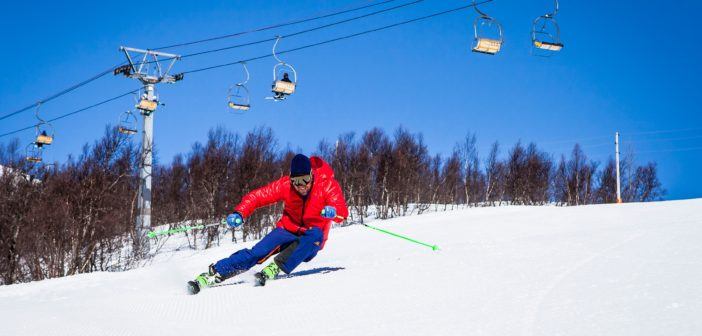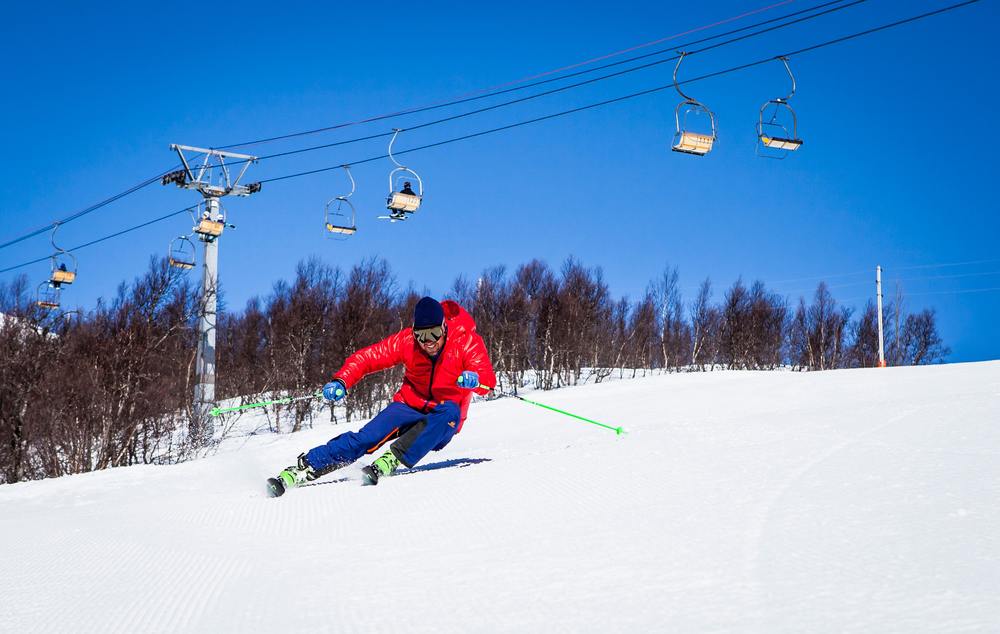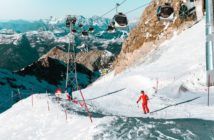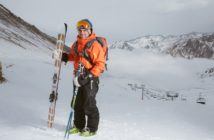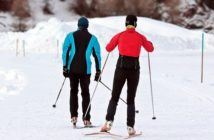Pain while skiing is all part of the territory. Crashes, falls, and even sore muscles are inevitable factors that you will have to account for every day you are out on the slopes.
However, when you find that skiing has begun to take a toll on your knees, it could be a sign that something is wrong.
If so, it may be time for you to reevaluate how you ski. You could imagine there is no right or wrong way to ski, and you just do what feels right for you.
However, you are actually putting yourself through unnecessary harm by not learning proper form, not preparing your body, or generally being unaware of other ways to avoid getting knee pain while skiing.
This short guide will run through what causes sore knees while skiing, how to avoid knee injuries in the first place, and ways to treat your sore knees after a rough day on the slopes.
Contents
What Can Cause Knee Pain While Skiing?
Knee injuries are among the most common forms of harm skiers encounter, but did you know that they are also the most preventable?
There are quite a few causes of knee pain due to skiing, but it is typically people who practice incorrect forms and maneuvers that have the most trouble.
Incorrect Knee Positioning
This is a major cause of knee pain while skiing. If you find that you are “dropping your knees in” too much, then you may have poor alignment.
This results in inflammation or pain around the kneecap or quadricep tendons.
Excessive Hip Bending
If you tend to bend your hips too much while skiing, you may find that your knees suffer the consequences.
Most skiers position themselves on their skis as if they are sitting down, which not only makes it harder for your quads to work during turns, but also strains the patella-femoral joint and tendons in both your legs.
Spending Too Much Time in One Position
Even if you assume the correct forms, you should take note of how long you spend in each position.
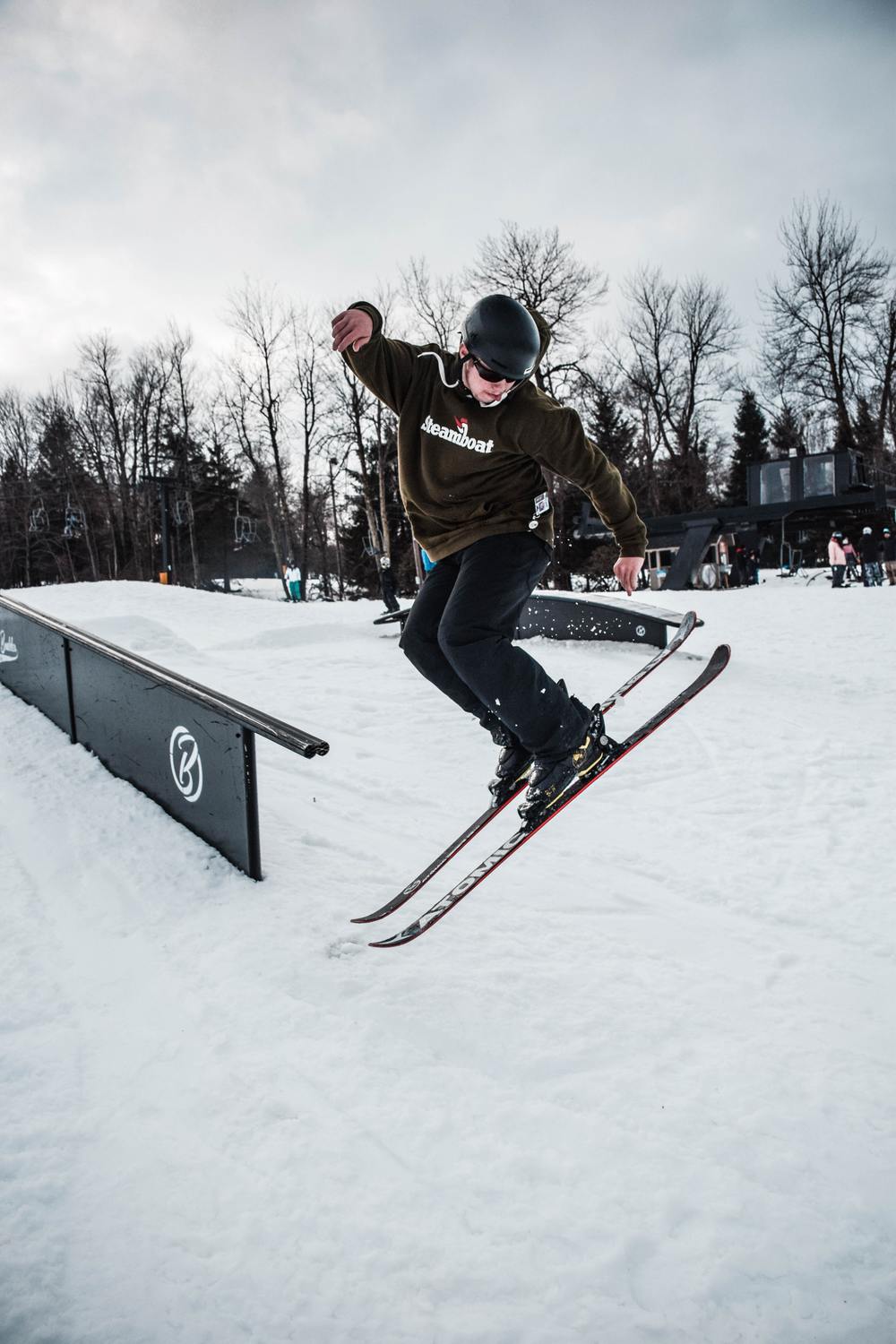
You should not be in the snow plow or wedge position for excessive amounts of time, as this can put a strain on your inner knee joints.
Muscling Your Turns
While it may look as if professional skiers use their muscles to cut sharp turns, they are not actually “muscling” these exercises.
Professional skiers are very aware of the damages that such a maneuver would cause, and so, you should not overwork your muscles when turning either.
Locked Knees
Locking your knees in fear on especially advanced runs not only causes your knees to ache later in the day, but it can also prove very dangerous.
This lock can shift your weight to the tails of your skis, resulting in a frightening plummet all the way to the bottom.
You should always tell your friends or loved ones if you think you are not ready for a certain level of skiing. It is better to be safe than seriously injured, after all.
Age
If you don’t already suffer from a sort of bone or joint degeneration, it won’t help that your brittle knee cartilages can’t absorb shock from jumps or especially tough landings.
Not Allowing Yourself Proper Time to Heal After an Injury
If you haven’t given yourself enough time to properly heal after a previous ski injury, then you are already setting yourself up for a world of pain.
You should always listen to your doctor’s instructions about your healing process before you decide to hit the powder again.
Instead, reintroduce skiing into your routine gradually until your doctor feels that you are ready to take on harsher slopes.
Bad Equipment
Old or poorly-fitted equipment is a lesser-known cause of knee pain but is concerning nonetheless.
Ill-fitting boots can lead to poor foot mechanics, which in turn will cause you lots of unnecessary foot pain.
Despite what many other skiers will tell you, your boots should never be too narrow or too stiff, as this will weaken your turns and movements in general.Do not strap your bindings on too tightly either.
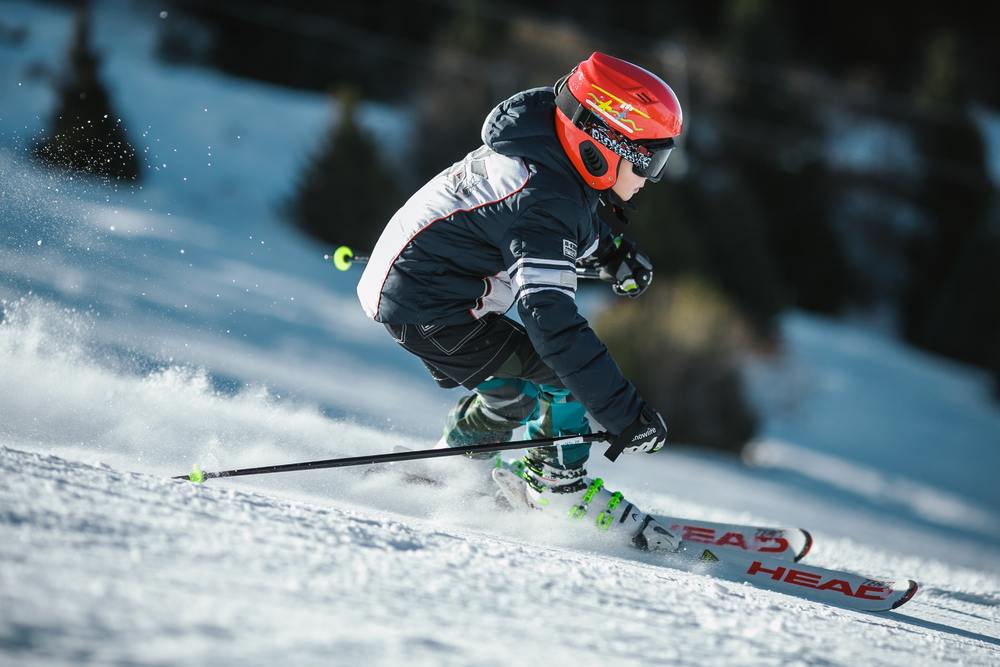
You may be worried that they’ll simply slide off, but this pre-release mechanism was specifically designed for racers who launched themselves out of the gate due to the sheer amount of force they exerted on the ski or binding.
You will find it very hard to get out of ski bindings normally, so set them as comfortably loose as you like.
Symptoms of a Skiing Knee Injury
Most ski-related knee injuries are due to knee ligament damage.
Ligaments are essentially bands of tough tissue that connect your bones together, weaving through and around your joints to do so.
They should not be confused with joints, which connect muscles to bones instead.
There are three grades of knee ligament sprain—mild grade I sprain, moderate grade II sprain, and severe grade III sprain.
If you have a mild grade I sprain, your ligaments may stretch somewhat, which can cause slight pain or even a swollen knee after skiing. Keep in mind that you should not take this type lightly, as that can actually increase the risk of a repeat injury.
If you have a moderate grade II sprain, your ligaments may partially tear, causing them to swell or bruise. Bending your knee may also become quite painful or difficult.
Your ligament will tear completely in a severe grade III sprain. The torn ligament will then swell and possibly even bleed underneath the skin. Your knee joints may then become unstable and unable to bear any weight whatsoever.
Oddly enough, this sprain will hurt the least, as you will have already torn any nerve endings that would have relayed the pain back to you.
How to Avoid Knee Pain During Skiing
Exercise
Preparing your body through rigorous exercise is one of the best ways to prevent knee pain while skiing.
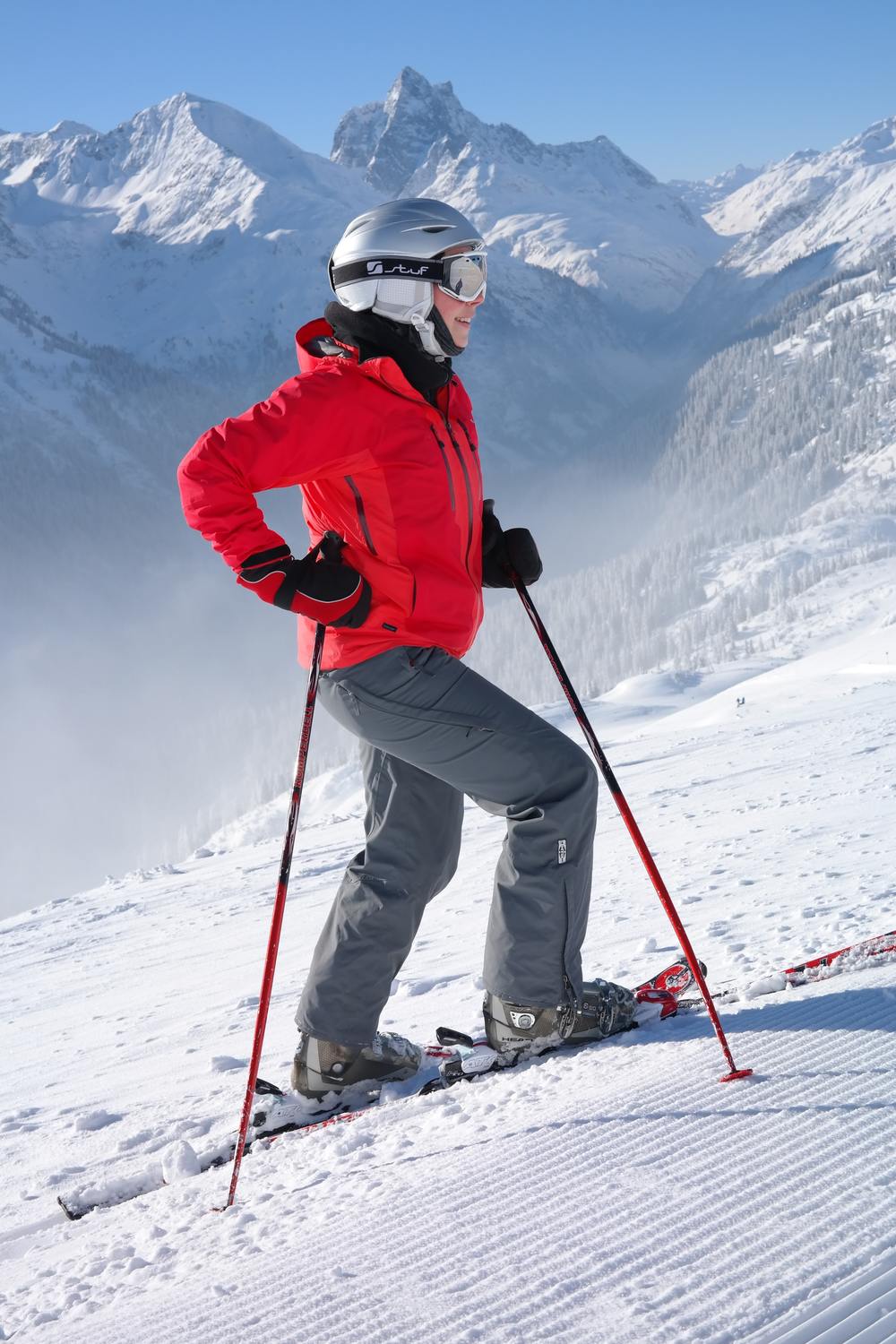
This exercise routine should focus on your body’s overall fitness, including balance, as well as coordination and agility training in the pre-season.
While it may seem that skiing requires the use of your knees quite a lot, it is actually your quads that are doing most of the work. Your primary exercises should then consist of squats or cycling, as these activities can build trunk muscles and leg muscles.
The Stone Clinic also suggests that, if you do not want your exercise routine to become stale, you can combine squats with weight-lifting, or alternate cycling with soccer to build speed and agility.
Your routine should be at least 20 minutes every day, and you can always combine this routine with other sports you like, too.
This video also shows some exercises you can for skiing.
Practice Good Form and Skiing Techniques
If you find that your initial knee pain is due to your poor form, then you should also practice bending and straightening your knees in the correct alignment.
Practicing in front of a mirror may prove helpful, though you should also practice these reps without one, once you feel you have the hang of automatically getting into the right alignment.
You should perform at least 30 reps of this every day, for three or even four times a day in the pre-seasons. This will allow the correct alignment to then become second nature to you, thus resulting in less knee pain.
You should also do a thorough warm-up each time before you ski, so as to prevent any possible knee pain or early quad burnout.
Rather than using your knees to help you turn, you should instead initiate turns using smaller foot and ankle movements.
By using your knees to direct your turns, you are putting immense strain on them, and this constant flexing, overextending, and twisting can lead to painful or even serious injuries.
Best Body Positions for Skiing
Before you hit the slopes, it is important to know just how to position your body while you ski.
Of course, you may know the correct positions to be in while skiing, but you may also find that you default to a different position depending on what you are used to.
To test if you have incorrect form, stand in front of a long mirror, or at least position a mirror in such a way that it focuses on your legs.
First, assume the position you usually take when skiing and take note of how far you bend your knees, especially in relation to your toes.
Then, imagine that there is a point in the middle of your kneecap and draw a line from that point down to the space between your second and third toe.
Most skiers, even professionals, find that they will drop their knees in every so often. It is always a good idea to practice correct positioning every day until it becomes a habit when you go skiing.
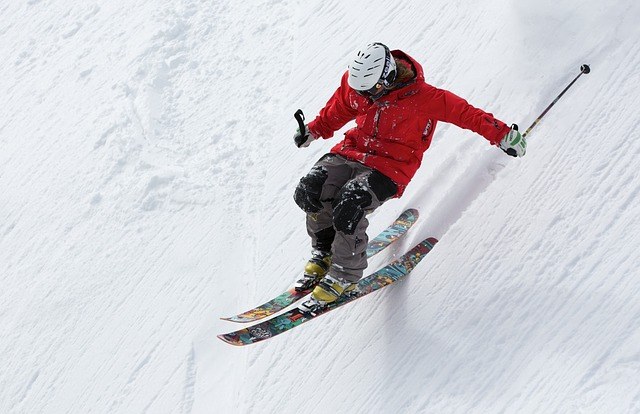
If you find that you bend your hips too much, then face a mirror sideways and bend your knees in such a way where your weight moves to the front of your feet.
Your weight should not rest straight down or backwards in this exercise. If you are holding the position correctly, you will not look as if you are sitting down, but rather, leaning forward.
While it may seem a bit tedious, constant practice of these positions should help prevent you from being hurt in the long run.
What to Do if You Have a Swollen Knee After Skiing
In the Immediate Aftermath
First, you should assess just how much damage your knees have taken, whether it be from a particularly nasty spill or if they ache sometime after you finish skiing for the day.
Be sure to treat any scrapes or cuts you have first, so they do not get infected. If you find your knees ache after that, or if you show any of the above symptoms for any grade of knee ligament sprain, contact your ski resort’s medical staff as soon as you can.
Longer Term Care and Treatment
To treat a grade I sprain, you should take a few weeks to rest the afflicted ligaments. If there is any swelling, simply ice the injury for a few minutes every day until the swelling goes down.
Anti-inflammatory medications may also be helpful in treating any pain.
To treat a grade II sprain, you may have to wear a weight-bearing brace or supportive taping, which will help you avoid stretching the ligament any further.
Returning to your normal routine (outside of skiing, that is) is only recommended after your knee joint stabilizes, or if you no longer feel pain.
Both grades I and II sprains will fully heal after about six weeks. For grade III sprains, you will have to wear a hinged knee brace for at least 3 to 4 months, so as to prevent any weight-bearing stresses from further aggravating the injury.
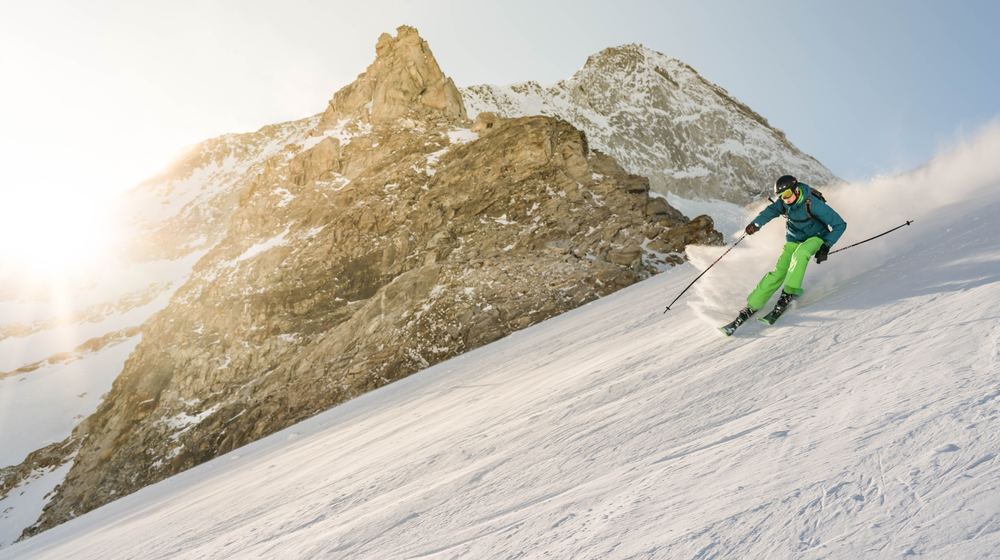
You should also follow up with your doctor before getting back into your normal routine.
Physiotherapy is when you use a combination of electrical modalities, massages, and strengthening joint exercises. This treatment has proven to be effective in healing the ligaments and can help prevent future tears.
Always be sure to follow your doctor’s instructions, and soon enough, you should be able to get back on your skis in no time!
Knee Replacement and Skiing
If you commit to your doctor’s advice, the follow-up treatments, and the rehabilitation process, Professor Adrian Wilson guarantees that it is absolutely possible for skiers to get back on the slopes after knee replacement surgery.
This applies to any other procedures done on your knees, for that matter.
Here’s a video showing more information on how to protect your knees while skiing.
Conclusion
There is no denying that skiing is one of the most exhilarating sports on the planet. Despite this, it can also cause you to have sore knees.
Knee injuries are especially common in skiers who refuse to practice correct form or maneuvers.
Always be sure to listen to both your ski instructor and doctors about proper skiing techniques or treatment options for any ski-related injuries, respectively.
Do you have any tips on avoiding knee pain while skiing?

